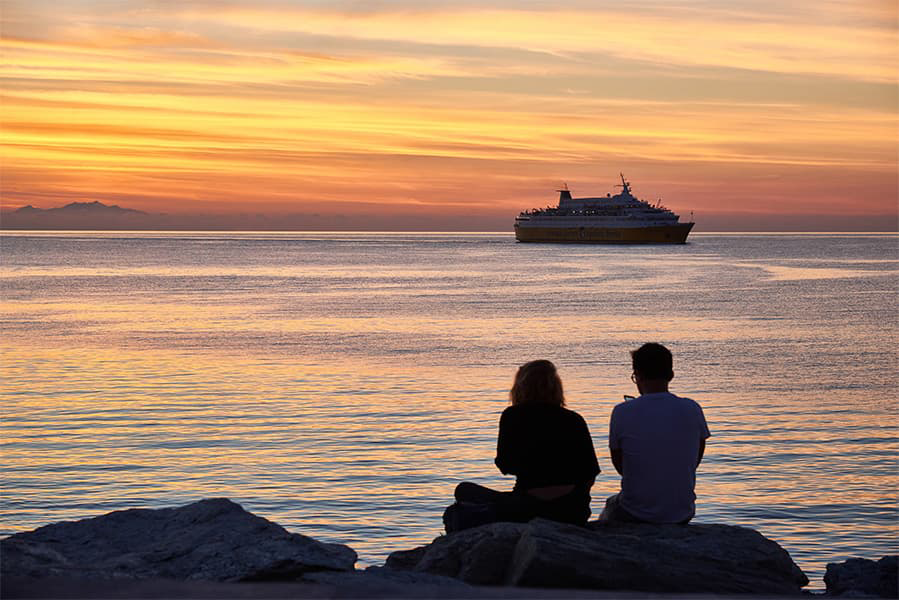Naples – Catania
Ferries to Sicily
Naples – Catania
Ferries to Sicily

The Naples Catania ferry route is currently not sailing. Naples Catania sailing durations and frequency may vary from season to season. View our Deal Finder for alternative routes and compare prices, times and schedules.
More routes than anyone else.

Compare fares, times & routes in one place.
Change plans easily with flexi tickets.

Book e-tickets & manage trips in-app.
Live ship tracking & real-time updates.

Top-rated customer support when you need it.
The Italian city of Naples, or Napoli as it is also called, is located in the Campania region of the country and lies on the Gulf of Naples, on southern Italy's west coast. The city is located in an enviable position between two volcanic areas, Mount Vesuvius and the Campi Flegrei. The Roman ruins of Pompeii, Herculaneum, Oplontis and Stabiae, which were destroyed the eruption of Vesuvius in 79 AD, are located close to the city as is the city of Sorrento and the beautiful Amalfi Coast. Also located close to Naples are the former parts of the Roman naval facility of Portus Julius, namely the port towns of Pozzuoli and Baia which are both to the north of Naples. The city is adorned with medieval, Baroque and Renaissance churches, castles and palaces and has long been an important centre for the arts and architecture. In the 18th century, Naples went through a period of neoclassicism, following the discovery of the remarkably intact Roman ruins of Herculaneum and Pompeii.
The port of Naples is home to several ferry, hydrofoil and SWATH (Small Waterplane Area Twin Hull) catamaran services, linking numerous locations in both the Neapolitan province, including Capri, Ischia and Sorrento, and the Salernitan province, including Salerno, Positano and Amalfi. Ferry services also operate to Sicily, Sardinia, Ponza and the Aeolian Islands.
Catania is located on the east coast of Sicily on the Ionian Sea and is the second largest city in Sicily and sits under the imposing shadow of Mount Etna, or A Muntagna as the locals call it. The volcano has had a significant influence on the city's history and its actual existence, having destroyed the city on several occasions. The most destructive being an eruption in the 17th century. Catania was covered in lava in 1669 and then 24 years later, in 1693, an earthquake shook the town to its foundations.
A popular attraction in the city, located on the edge of the town's square is the Cathedral which is dedicated to St. Agata, the city's patron saint. The cathedral stands on the site of an earlier 11th century church that was almost entirely destroyed in the 1693 earthquake. The imposing cathedral's baroque architectural style incorporates Roman columns taken from an amphitheatre. There are more Roman elements in the cathedral as beneath there are some Roman baths. The Baroque theme continues within the cathedral's interior with several ornate chapels and a fresco depicting the 1693 earthquake. Catania's most famous son, Bellini, is buried in the cathedral as are three Aragonese Kings: Frederick II, Louis and Frederick III.